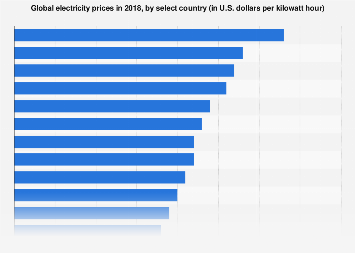
The impact of relative electricity costs on mechanical power usage in China

Huge exertion has been carried out at the investigation of economic elements, for instance, outright energy fees to understand strength usage and economic improvement. Be that as it can, this methodology overlooks preferred expansion impacts, wherein the prices of packing containers of products may increase or fall at diverse costs from the ones of strength costs. Subsequently, it thoroughly is probably the overall power value, not the preferred energy fee, that has maximum great impacts on electricity usage. To test this theory, we present another informative variable, the homegrown relative energy cost, which we characterize as “the share of homegrown energy charges to the general price stage of a financial system,” and we test the logical depth of this new thing. Alongside those strains, this paper investigates the relationship between relative Electricity plans and strength usage in China from the factor of view of swelling fees over the length from 1988 to 2012. The instant, administrative and time-transferring effects are caught utilizing techniques, for example, facet relapse and the nation-area model. The immediate outcomes of relative energy fees on absolute electricity usage and pressure are −0.337 and −0.250, separately; the influences of large tenet on strength usage through the financial structure and the energy shape are −0. One hundred forty-four and −zero.148, in my opinion; and the discouraging and upward influences of rising and falling energy prices on power usage are 0.3520 and 0.3564, personally.
Basis
In 2011, China exceeded the U.S. as the world’s largest power burning-thru state. Additionally, China is presently the world’s largest producer of sulfur dioxide and ozone harming materials. Consequently, energy maintenance is currently a critical difficulty for China to understand in its undertaking to accomplish a reasonable turn of occasions. In 2005, China focused on a 20 % electricity reserve finances consciousness in its eleventh “5-year Plan.” on the Copenhagen meeting in 2009, China assured that its “carbon emanations would decrease by forty–forty-five % in line with the unit of Gross domestic product through 2020.” Except, China’s twelfth “5-yr Plan” for power sparing in 2012 manifestly settled an objective of 21 % for cutting-edge electricity utilization in the course of the time of the arrangement. The big mandates in the arrangement demonstrate first that modern-day strength preservation and emanations lower endeavours ought to proceed. 2d, the fee adjustments of asset escalated items should be superior, and the inspiration of a cost development instrument that completely reflects the market natural marketplace, asset shortage, and the expenses of ecological damage should be quickened. In the end, the need to lessen carbon discharges has emerged as a massive requirement on China’s economic development measure.
All in all, for the reason that the modern enterprise subordinate development model overlooks the improvement of practical power and much less carbon-concentrated energizes for a choose spotlight on the safety of normal strength, there are two fundamental tactics to perform present-day power reserve finances: controlling the mechanical development fee and diminishing strength pressure (strength/Gross home product). From one perspective, since China is a non-business state and considering that yield is a part of the macroeconomy, its development price has no longer been controlled; then again, power energy mirrors the issue of strength productivity, and from an introduction factor of view, numerous elements influence electricity force nearly talking, specialized advancement and streamlining of the mechanical and electrical structure cannot be finished without a successful primary thrust, i.e., this type of alternate requires some specific way to manual and arrange it. Among these extraordinary methods, valuing assumes a conspicuous task.





